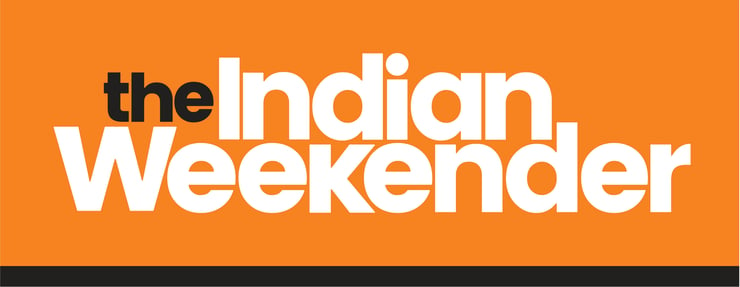Celebrating the arrival of Indians

Thousands of people of Indian origin around the world today (May 30) celebrate India Arrival Day.
The day marks the arrival of ship-loads of people from India to other parts of the world where they served as indentured labourers, and struggled against atrocities of the colonial masters, to make a living for themselves and their families.
Indian Arrival Day is one of the more unusual celebrations and public holidays anywhere in the world. It is celebrated in Trinidad and Tobago on May 30 each year, marking the arrival on May 30, 1845 (almost 11 years after the abolition of slavery) of a ship usually called Fatel Rozack carrying people from India who were to be indentured labourers – commonly known as "coolies".
In Fiji, it is better known as “Girmit” celebrations where half the nation’s population marks the arrival of their ancestors on May 14, 1879 – 132 years ago.
In Trinidad, the arrival of the East Indian people, as they were called, is the local equivalent of the Mayflower landing in North America.
Indian Arrival Day was first celebrated on May 30, 1945, the centenary of the workers' arrival, at Skinner Park, San Fernando, but the celebrations tailed off with the passage of time and by the early 1970s only the Divine Life Society (a Hindu group) was staging any form of procession and ceremony, using the name Indian Emigration Day.
By 1977 this celebration had ceased and in 1978 an organisation which called itself the Indian Revival and Reform Association (IRRA) was set up to revive the idea.
In 1979 the IRRA moved to expand the revived event and sought the co-operation of the various Indian groups and organisations.
The largest such group, Sanatan Dharma Maha Sabha agreed to hosting and promoting a celebration at its HQ on 30th May, but insisted that after 134 years the Indian community were no longer Emigrants – and so the name Indian Arrival Day was created.
The celebration continued to be supported (but not officially recognised) until in 1995 the 150th Anniversary was declared a National Holiday by the Government, with the title "Arrival Day".
There are also related celebrations in Australia, Canada and the United States. In the UK the Caribbean communities have also begun to celebrate their heritage with complementary celebrations.
Hindus have sent greetings to Trinidad and Tobago, one of the wealthiest nations in the Caribbean, as it celebrates “Indian Arrival Day” on May 30.
Thousands of people of Indian origin around the world today (May 30) celebrate India Arrival Day. The day marks the arrival of ship-loads of people from India to other parts of the world where they served as indentured labourers, and struggled against atrocities of the colonial masters, to make a...
Thousands of people of Indian origin around the world today (May 30) celebrate India Arrival Day.
The day marks the arrival of ship-loads of people from India to other parts of the world where they served as indentured labourers, and struggled against atrocities of the colonial masters, to make a living for themselves and their families.
Indian Arrival Day is one of the more unusual celebrations and public holidays anywhere in the world. It is celebrated in Trinidad and Tobago on May 30 each year, marking the arrival on May 30, 1845 (almost 11 years after the abolition of slavery) of a ship usually called Fatel Rozack carrying people from India who were to be indentured labourers – commonly known as "coolies".
In Fiji, it is better known as “Girmit” celebrations where half the nation’s population marks the arrival of their ancestors on May 14, 1879 – 132 years ago.
In Trinidad, the arrival of the East Indian people, as they were called, is the local equivalent of the Mayflower landing in North America.
Indian Arrival Day was first celebrated on May 30, 1945, the centenary of the workers' arrival, at Skinner Park, San Fernando, but the celebrations tailed off with the passage of time and by the early 1970s only the Divine Life Society (a Hindu group) was staging any form of procession and ceremony, using the name Indian Emigration Day.
By 1977 this celebration had ceased and in 1978 an organisation which called itself the Indian Revival and Reform Association (IRRA) was set up to revive the idea.
In 1979 the IRRA moved to expand the revived event and sought the co-operation of the various Indian groups and organisations.
The largest such group, Sanatan Dharma Maha Sabha agreed to hosting and promoting a celebration at its HQ on 30th May, but insisted that after 134 years the Indian community were no longer Emigrants – and so the name Indian Arrival Day was created.
The celebration continued to be supported (but not officially recognised) until in 1995 the 150th Anniversary was declared a National Holiday by the Government, with the title "Arrival Day".
There are also related celebrations in Australia, Canada and the United States. In the UK the Caribbean communities have also begun to celebrate their heritage with complementary celebrations.
Hindus have sent greetings to Trinidad and Tobago, one of the wealthiest nations in the Caribbean, as it celebrates “Indian Arrival Day” on May 30.









Leave a Comment